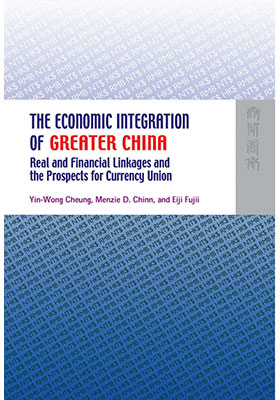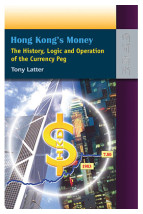The Economic Integration of Greater China
Real and Financial Linkages and the Prospects for Currency Union
(大中國經濟一體化:中國房地產和金融聯繫和貨幣聯盟的前景)
ISBN : 978-962-209-822-0
April 2007
172 pages, 6″ x 9″
- HK$295.00
Ebooks
Also Available on
The tremendous success of China’s program of economic reform and the rapid integration of China into the global economy have prompted this study on the economic and financial integration between mainland China, Hong Kong, and Taiwan—a grouping sometimes referred to as Greater China. While there has been a plethora of analyses of China’s economic interactions with other economies, this book fills the need for a thorough investigation of regional financial and real interactions—corresponding to the many exhaustive studies of such interactions between developed countries and between East Asian countries.
Since real and financial integration has substantial implications for the efficiency of resource allocation and the efficacy of macroeconomics policy, Cheung, Chinn and Fujii offer clear analysis of the current state of economic integration of Greater China, thereby helping to gauge the potential role of China in the global economy. Prospects of a currency union in Greater China, an extreme form of integration, are also evaluated with respect to benefits and costs to the three parties. In addition, the authors provide complementary discussions regarding the degree of integration between China and several Pacific Rim economies, including those of Japan, Korea, Singapore, and the United States.
Cheung, Chinn and Fujii provide an up-to-date assessment of mainland China’s economic development and its integration with its neighboring economies, especially Hong Kong and Taiwan. This grouping is also known as Greater China.
There are a number of approaches to assessing economic integration, and the authors present some standard measures—including trade flows, output movements, saving and investment correlations, and consumption comovements. They emphasize the measures based on some key parity conditions in international finance—real interest parity, uncovered interest parity, and relative purchasing power parity. While there is no perfect empirical measure of economic integration, the theoretical relationships between integration and these three parity conditions are well founded in economics. Moreover, the three parity conditions constitute a unified framework that can be used to assess the degree of real and financial integration, and thus offer a convenient way to investigate the interaction between these two types of integration.
In addition, the authors evaluate the prospect of a currency union in Greater China, the most extreme form of integration. Prospects of China’s continued integration with the world economy, and the implications of policies in Beijing and other Pacific Rim capitals are also discussed.





